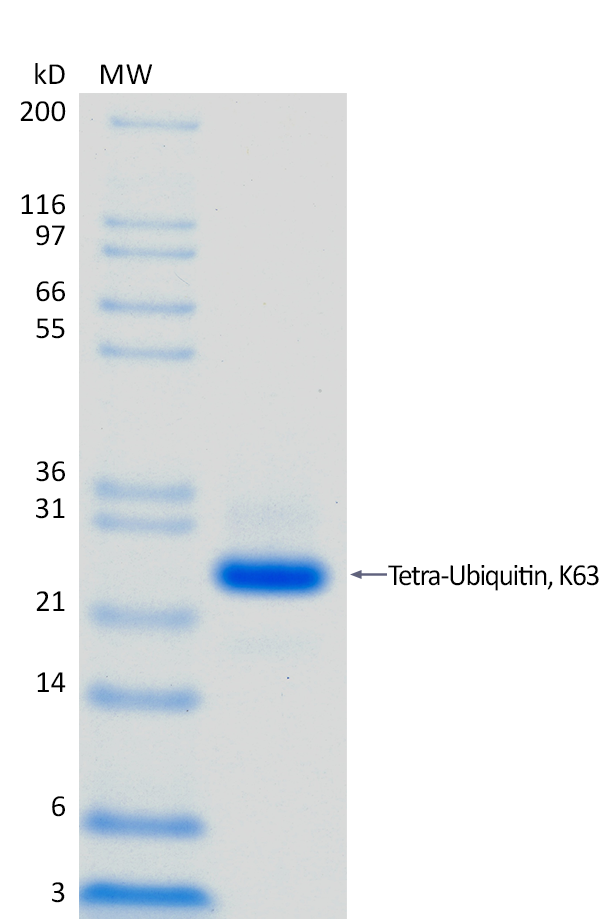 2 μg K63-linked Tetra-Ubiquitin run on 4-12% SDS-PAGE gel under reducing conditions
2 μg K63-linked Tetra-Ubiquitin run on 4-12% SDS-PAGE gel under reducing conditionsFor Research Use Only (RUO)
Weeks, S. D., et al., (2009) Proteins 77:753-59. PMID
Yoshikawa, A., et al., (2009) FEBS Lett 583:3317-22. PMID 19766637
Liu, Z., et al., (2015) eLife 4:e05767. PMID 26090905
Cao, L., et al., (2022) Cell Death Discov 8:410. PMID 36202787